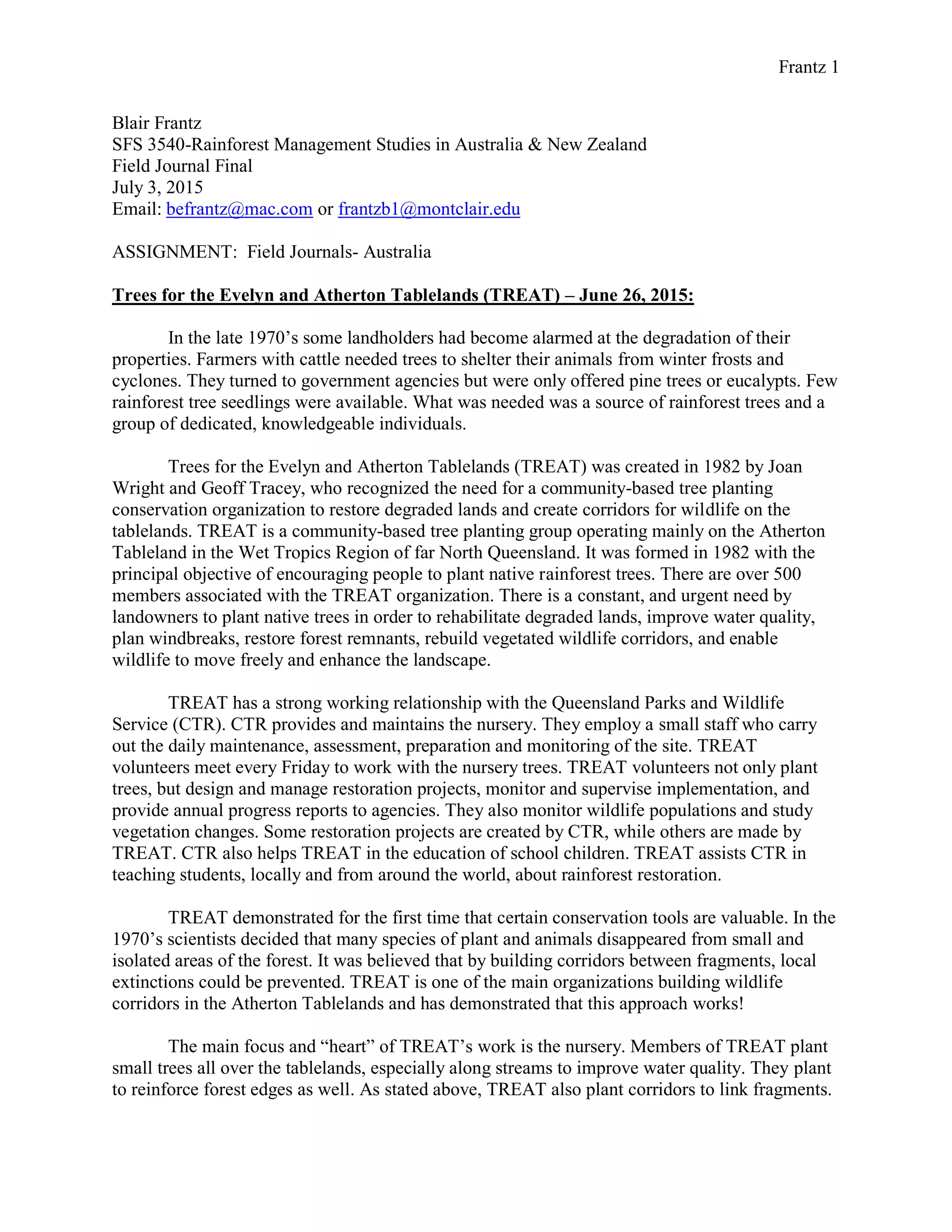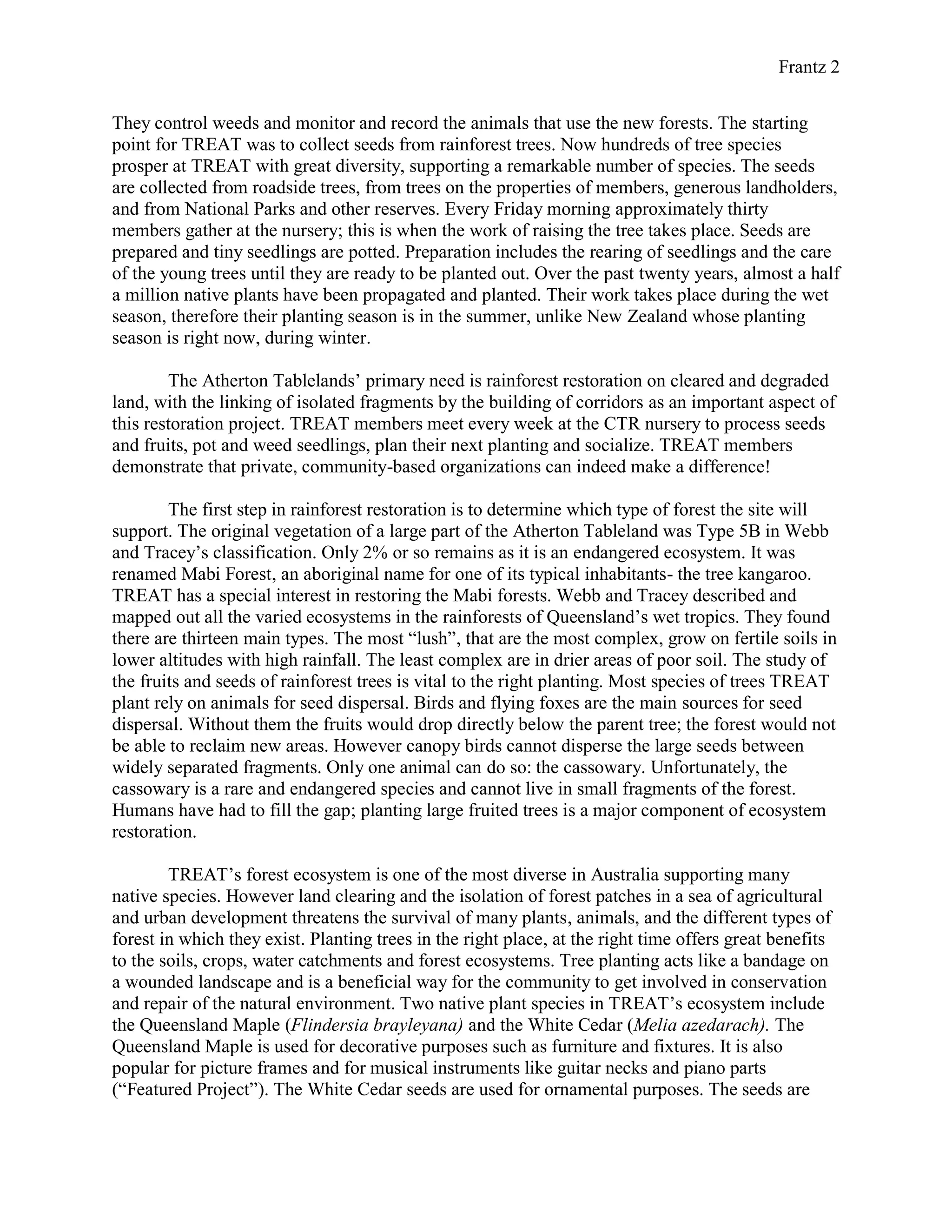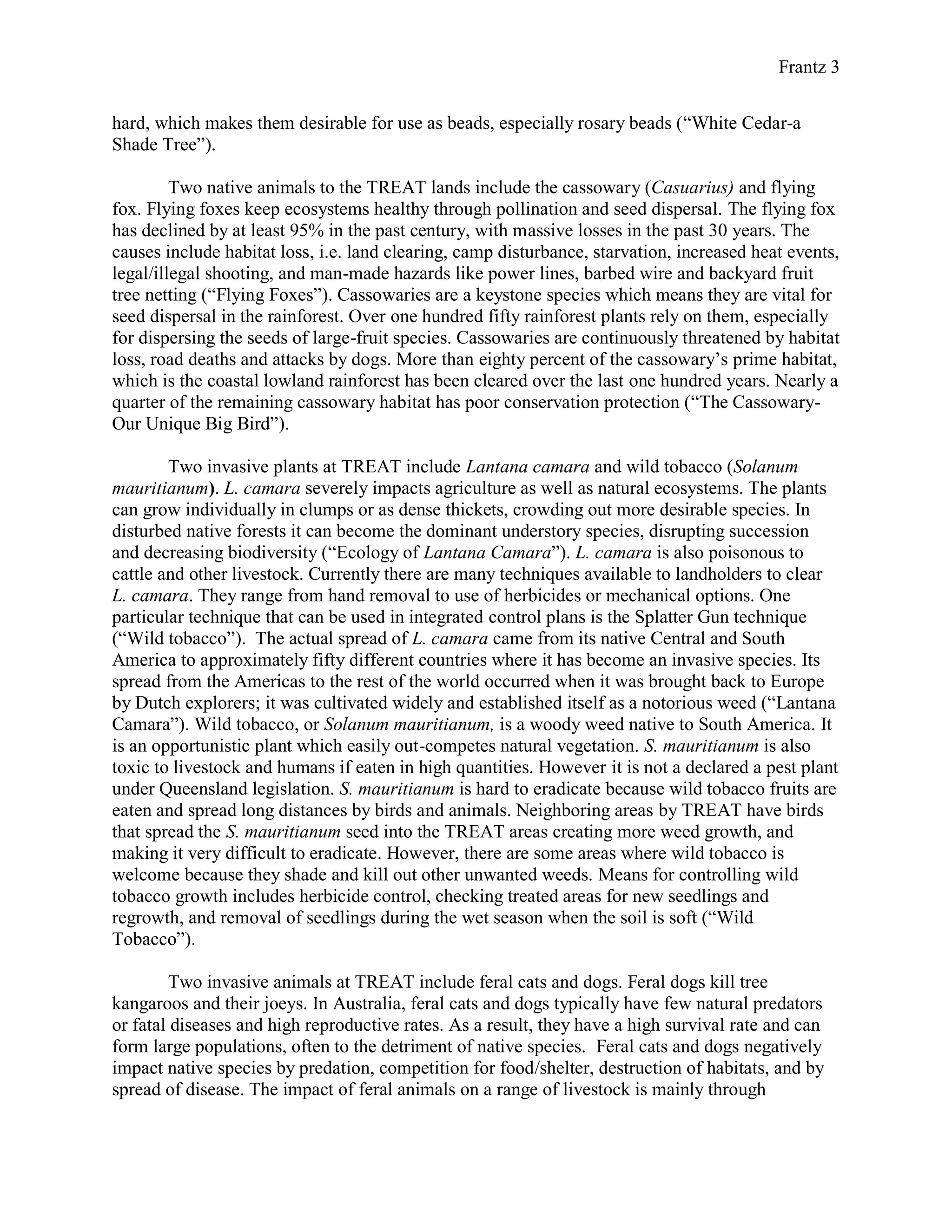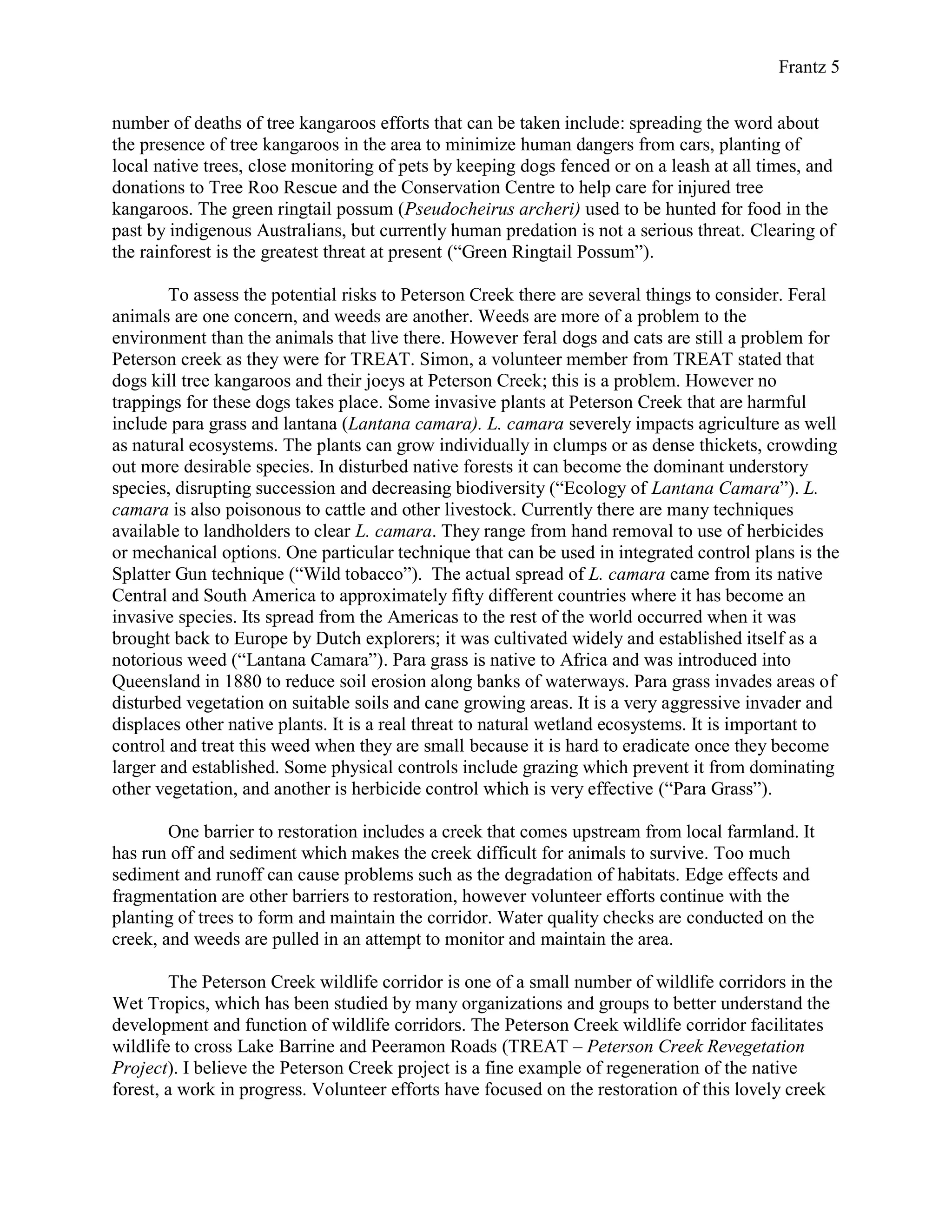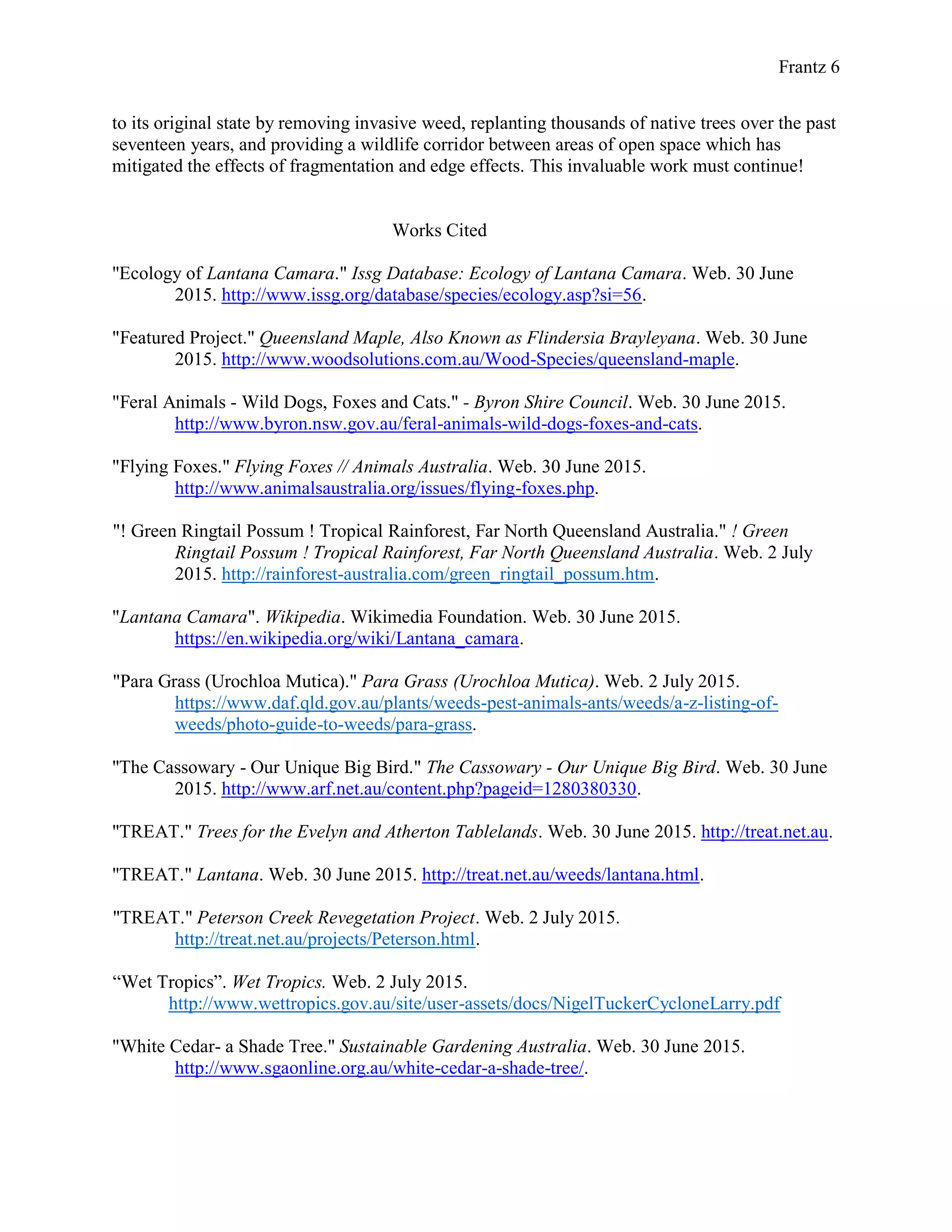The document summarizes the work of Trees for the Evelyn and Atherton Tablelands (TREAT), a community-based tree planting group in Queensland, Australia. TREAT was founded in 1982 to encourage planting of native rainforest trees and has since planted over 500,000 trees. Their work focuses on restoring degraded lands and creating wildlife corridors. The document also describes Peterson Creek, where TREAT has worked since 1998 to establish a corridor connecting two isolated forest patches by planting over 89,000 trees along the creek.
